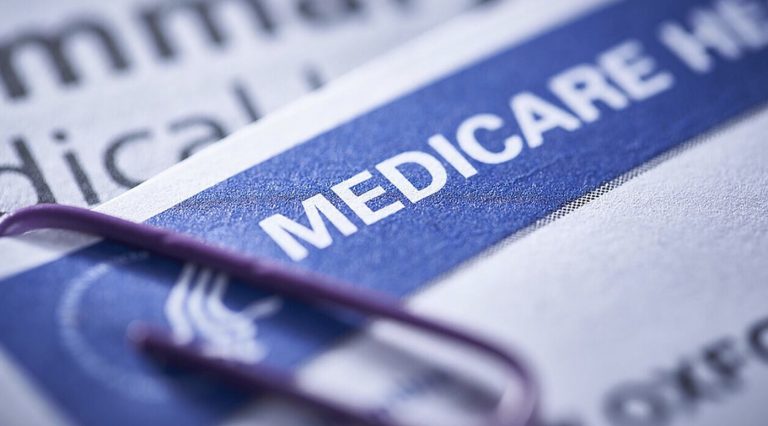Medicare is a federally-funded health insurance program for Americans 65 and older or those with certain disabilities. While Medicare is one of the most significant pieces of legislation passed since President Lyndon B. Johnson’s Great Society, it was not always popular with Americans.
The mandatory enrollment process for Medicare can be difficult to figure out what stage you fall into and when you need to enroll to maximize your benefits. This blog post will cover when you should enroll in Medicare.
3 Months Before Turning 65
If you are not yet eligible for Medicare and are within 3 months of hitting 65, you should enroll in Part B of Medicare. This is the basic medical coverage portion of Medicare and will cover 70% of all costs associated with an in-office, emergency room, or outpatient surgery. Your monthly premium covers the remaining 30%.
The problem with waiting until a few months before turning 65 to enroll is that as soon as you hit 65, your premium doubles without any actual coverage. Your benefit would be significantly lower with a premium increase at this point than a new onset of chronic illness or injury.
The premium increase is also a disincentive for you to enroll if you need to make costly medical decisions or see a specialist. This holds even if you are still healthy enough to have a full medical benefit at this point. If Medicare were an investment, the value of the investment would decrease dramatically after 3 months, so it can be difficult to predict when you will need to enroll.
6 Months Before Turning 65
If you are 6 months away from turning 65, your Medicare Part D coverage should be active. Contact Social Security to enroll if you have not called to set up this part of your insurance. You can also set up a time to enroll in person at a local Social Security office.
Part D is prescription drug coverage and cannot be added after the fact. It is important to add this coverage as soon as possible. Coverage will start on the first day of your birth month, regardless of when you turn 65. When comparing healthcare costs for Part D, it is important to ensure you compare apples to apples and use the same plan.
The downside to enrolling in Part D before turning 65 is that the actual benefits will not be the same as if you were able to create your own plan. In most cases, you are limited to 3 drug choices. Your premium might also increase when you hit 65, even if you were able to choose your own drug plan.
65 and Beyond
You should enroll in Medicare when you are 65 years old. If you are 65 or older, you should enroll in Part A of Medicare so that you receive medical coverage benefits immediately. You could get a much more expensive plan than an individual who enrolled earlier if they had not hit 65.
If you are caring for a spouse or a dependent adult, the caregiver can bring the loved one to the Social Security office and apply for benefits for them rather than waiting until they go to the doctor and say, “I need help.” This also ensures that significant medical expenses are covered as soon as possible, even though it might be necessary to pay them out of pocket initially. The premium increases after 75 years old with no coverage, so it is important to make sure you are covered.
When You Are Diagnosed With End Stage Renal Disease
Anytime you are diagnosed with end-stage renal disease, you should enroll in Medicare. This is part of what is known as the kidney transplant program. Any time you get a new diagnosis of any type of kidney disease, you need to enroll in Medicare Part B so that you receive coverage immediately.
Medicare Part B covers kidney dialysis, but it is the backbone of the transplant program. Months will pass before you receive a transplant, and in that time, Part B should be active so that you have coverage.
When You Are Diagnosed With Lou Gehrig’s disease
Lou Gehrig’s disease is a type of ALS (acute motor neuron disease) that causes weakness, muscle atrophy, and stiffness. Your disease is not treated with any form of stem cell therapy, but there are medications to slow the progression and help you live longer. If you have been diagnosed with Lou Gehrig’s disease, you should enroll in Part A so your paperwork can be processed immediately.
Medicare will cover the expenses associated with symptoms and medical visits. Part A will cover 80% of medical costs, including staying in the hospital for as long as needed.
When You Are Disabled
If you are disabled before you are 65 years old, you should be enrolled in Medicare part B. Depending on your financial situation, you can apply for Part A, Part B, or both.
If you cannot work and cannot afford the monthly premiums of Part B, Medicare will cover your medical costs directly without going through a third-party payer. Suppose your disability is based on your work, and you have been out of work for 12 months or more. In that case, the Social Security Administration will handle all eligibility requirements for the program. This is different from the disability insurance offered by your employer.
In conclusion, you need to enroll in Medicare when you are eligible, and it will cover the cost of any medical expenses you incur. The more time passes between enrolling in Part A and your 65th birthday, the less benefit you will receive. It is also important to remember that when using health savings account to pay for your health insurance premiums; you should note what percentage of your premium goes towards other tiers of coverage like Medicare or Part D.

0 Comments